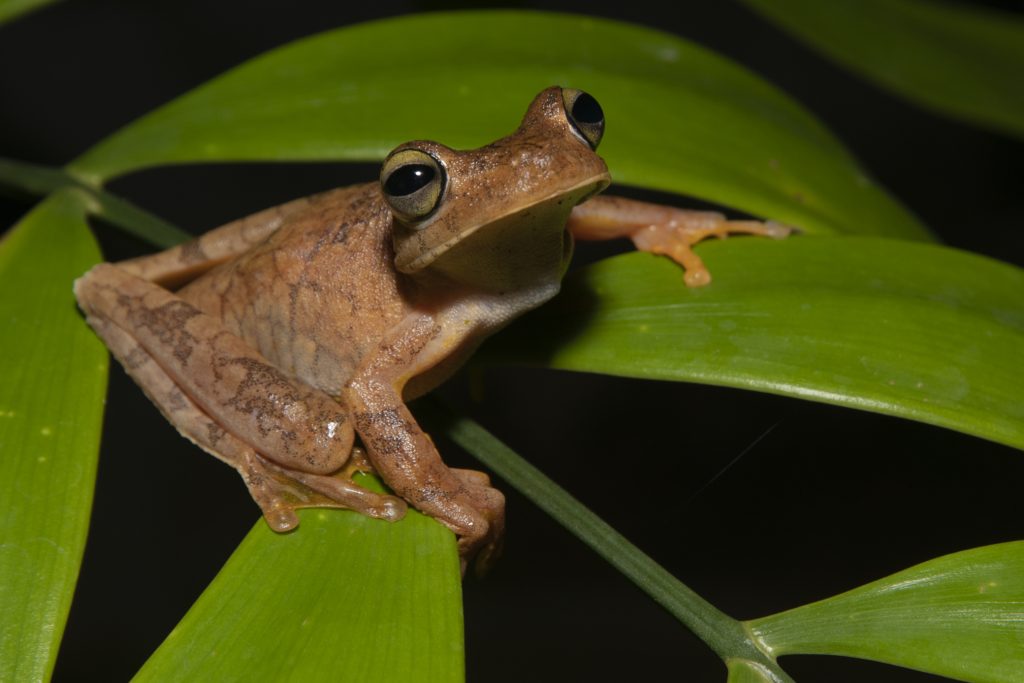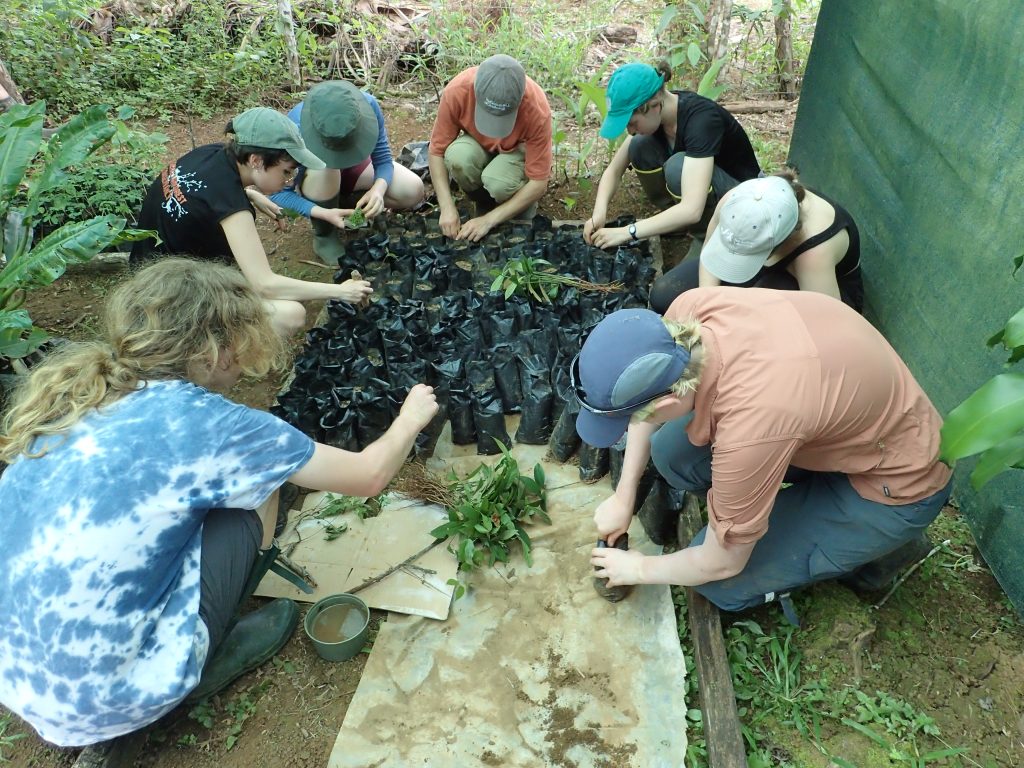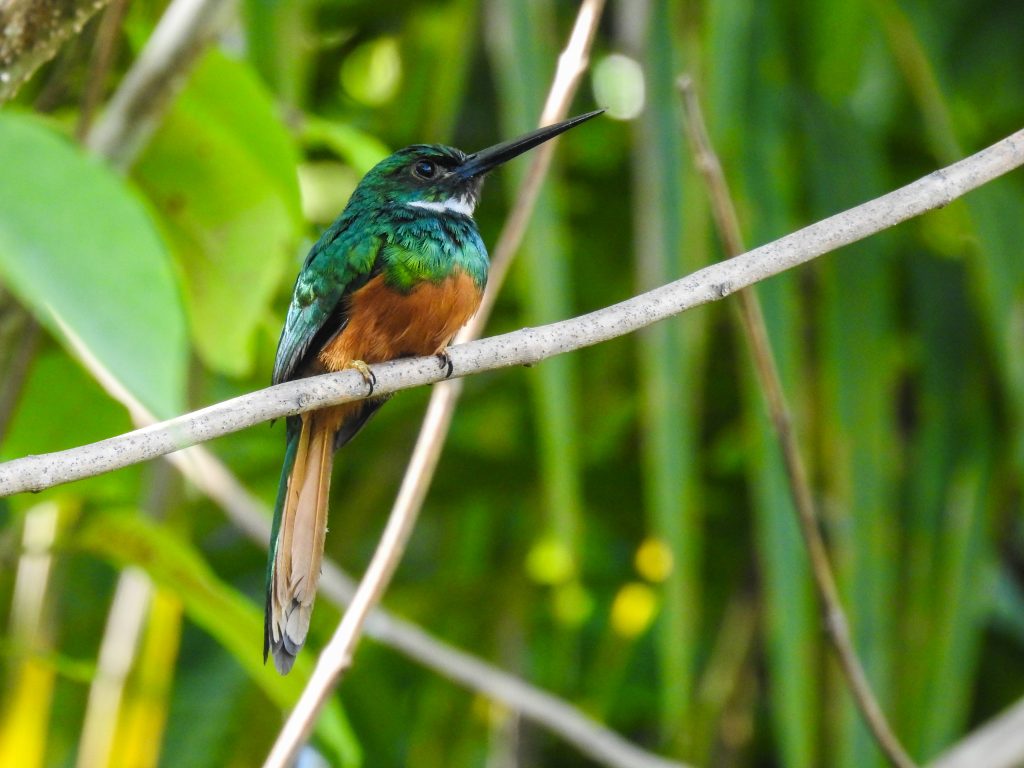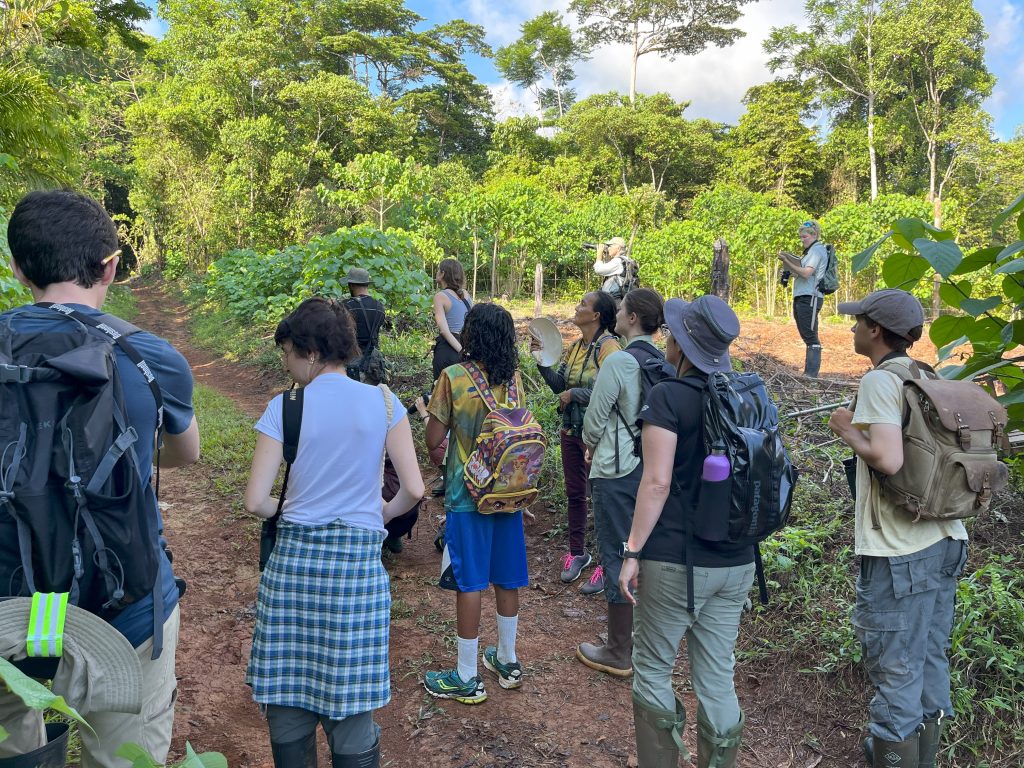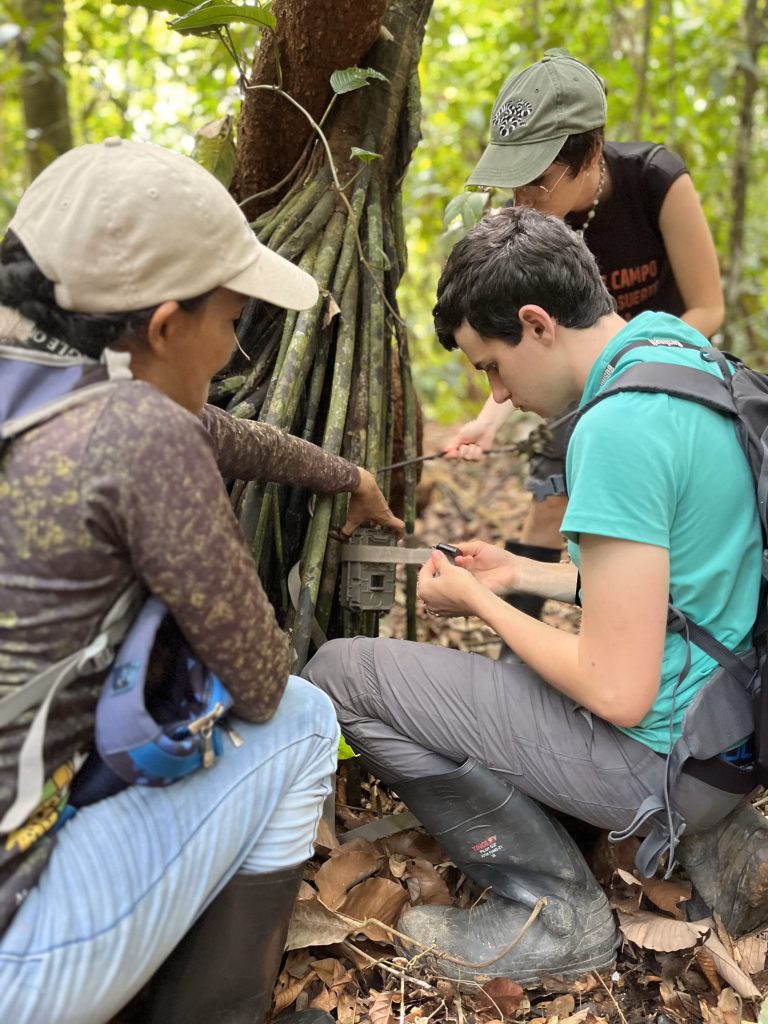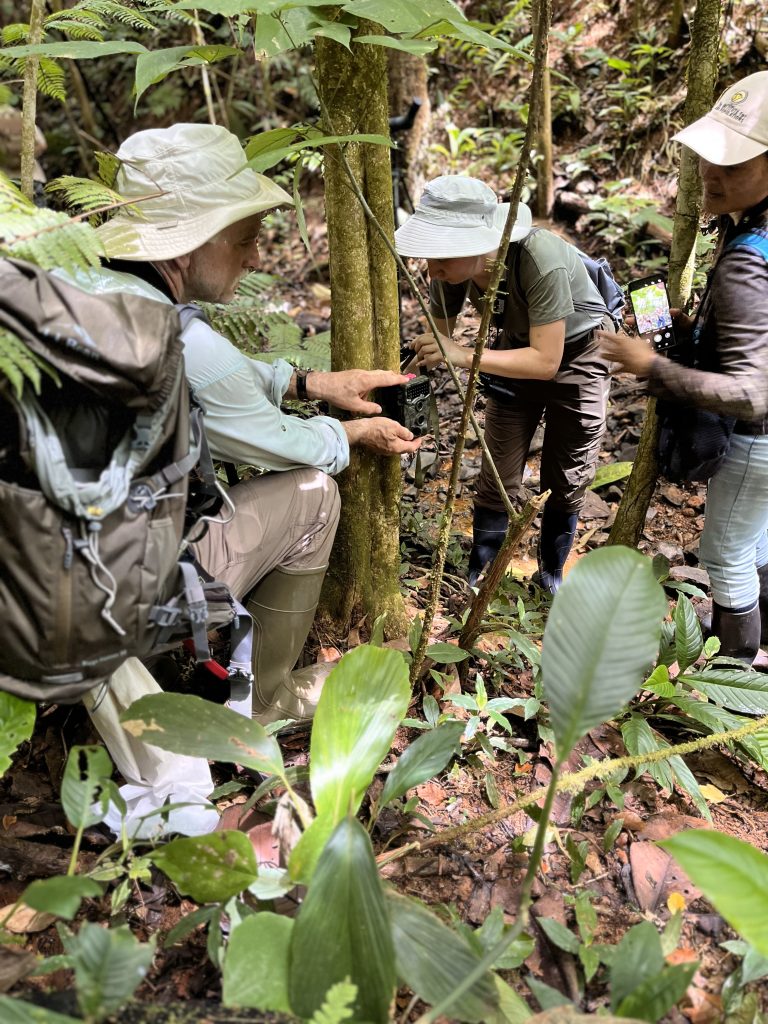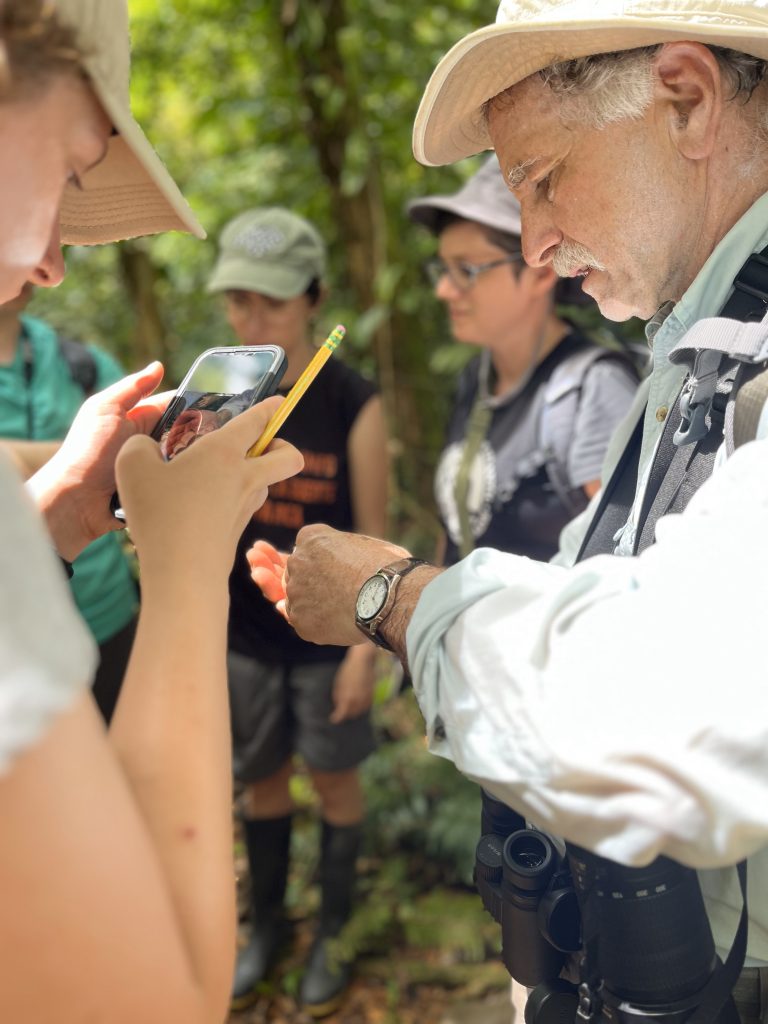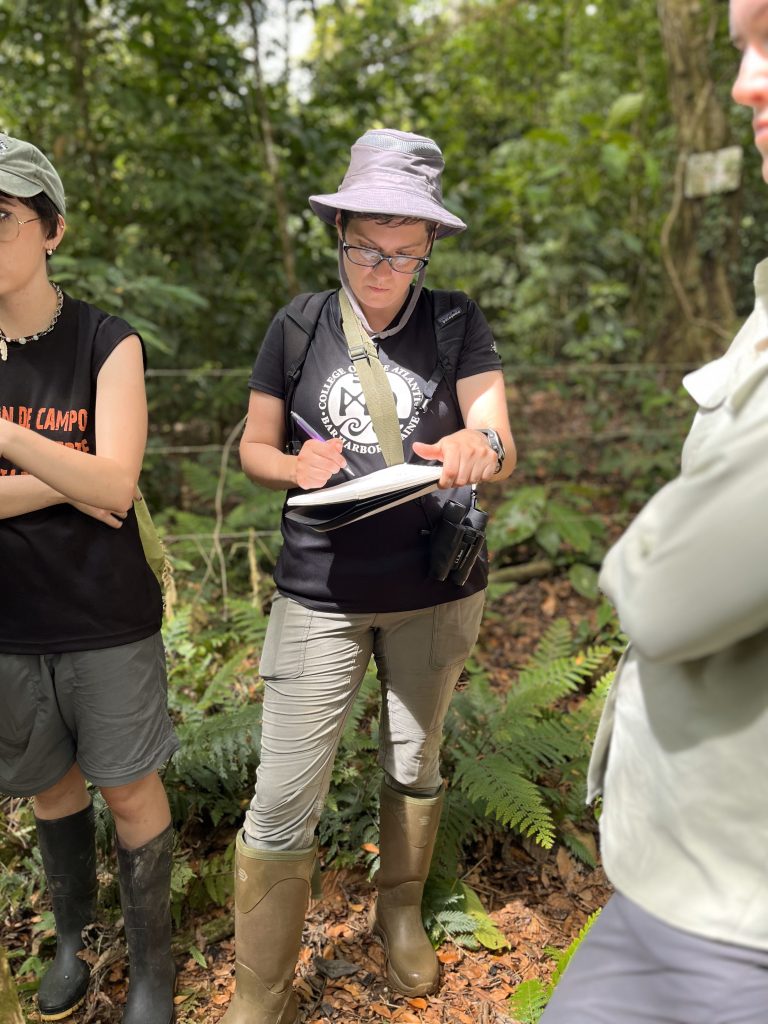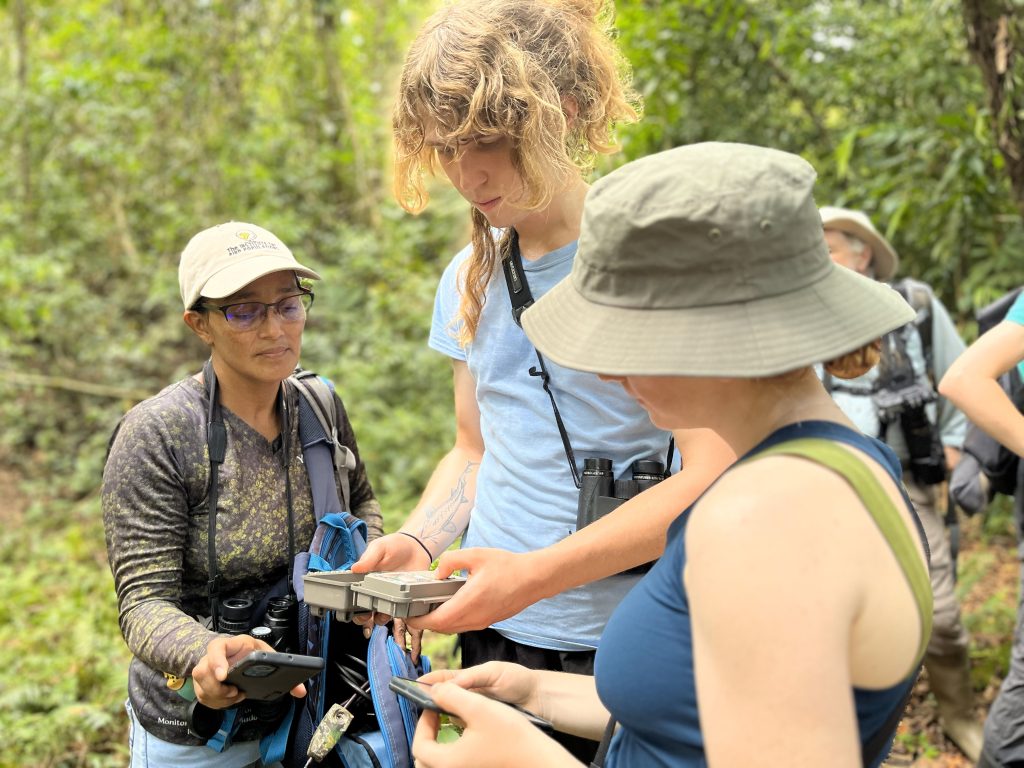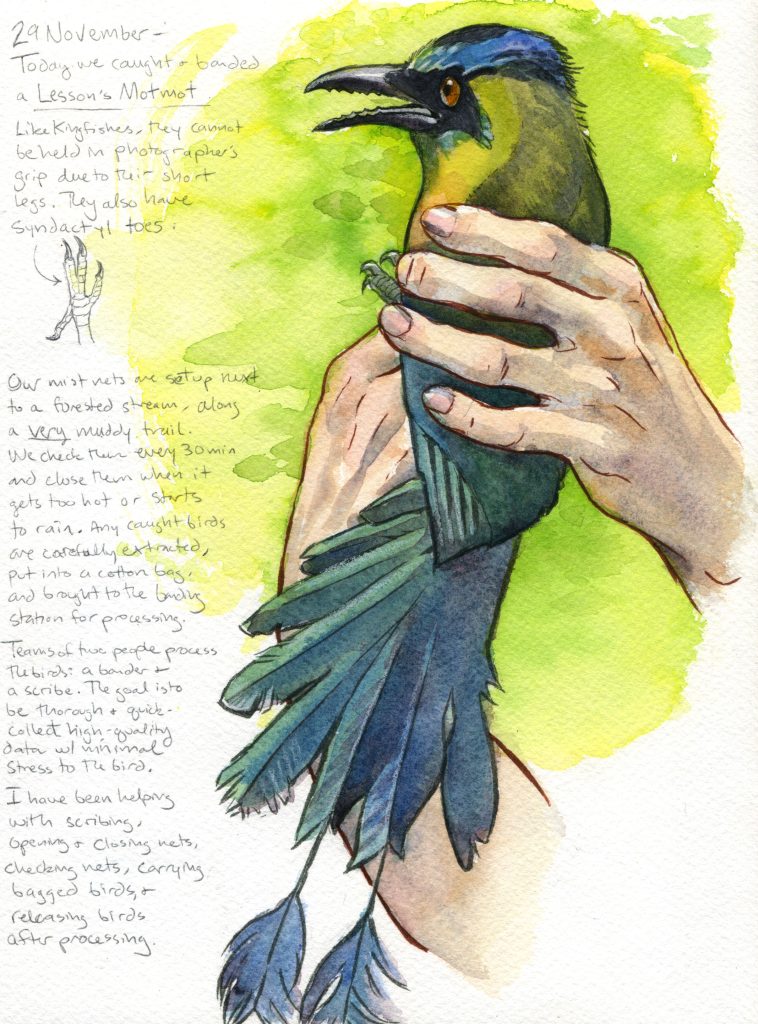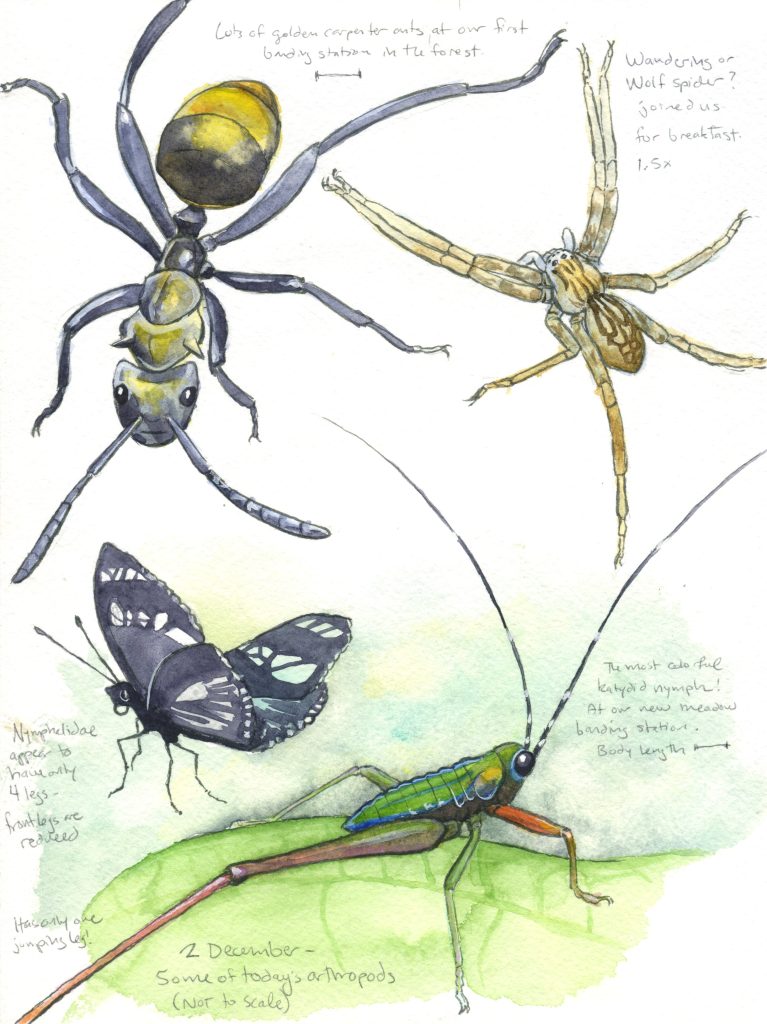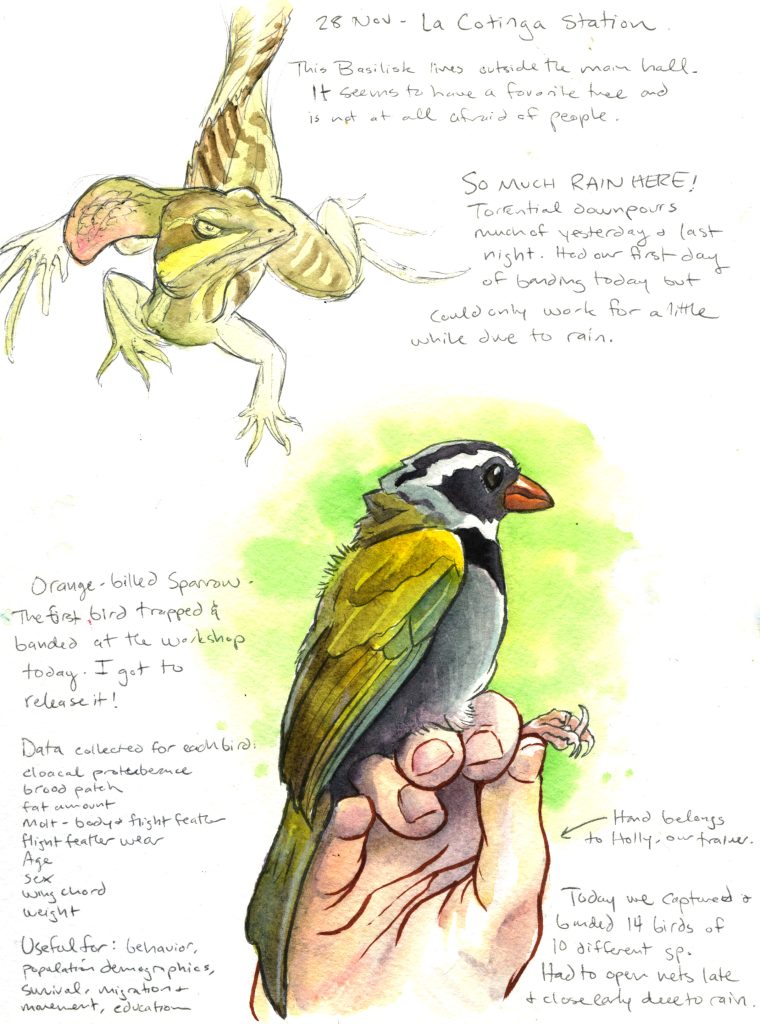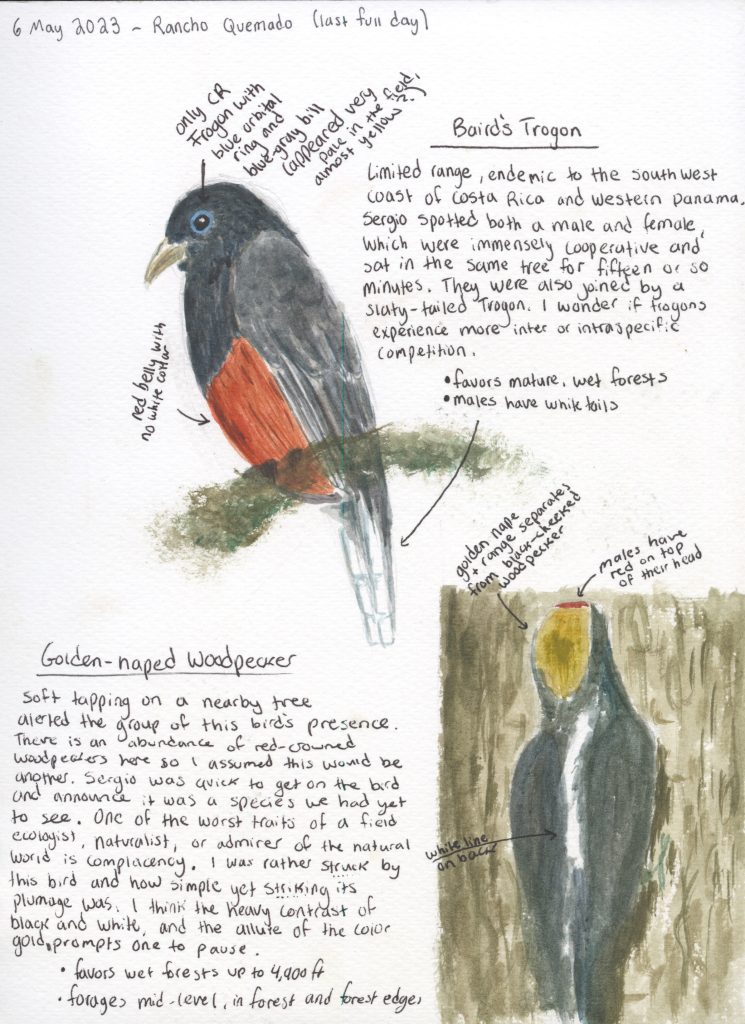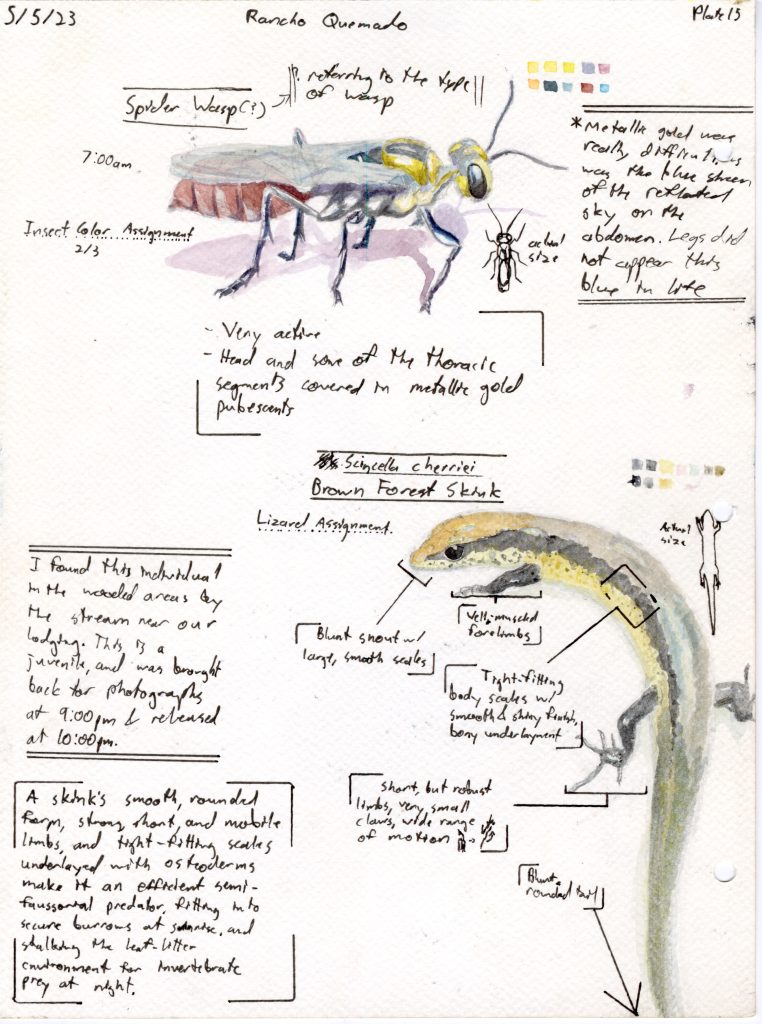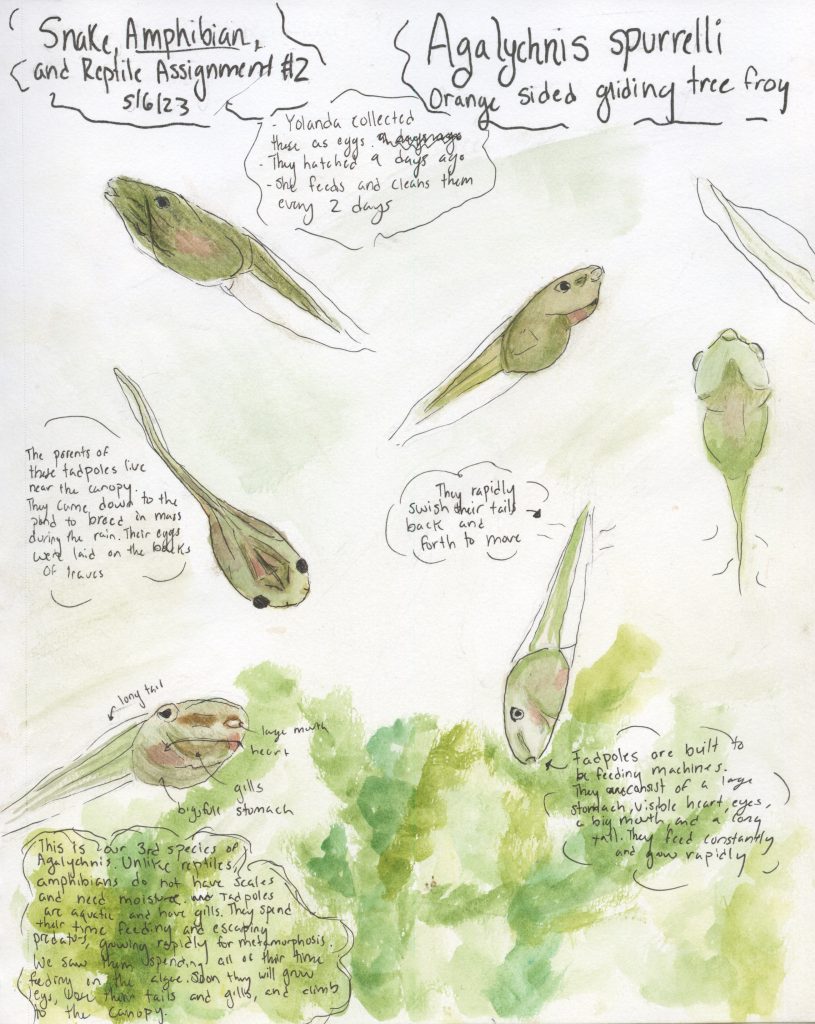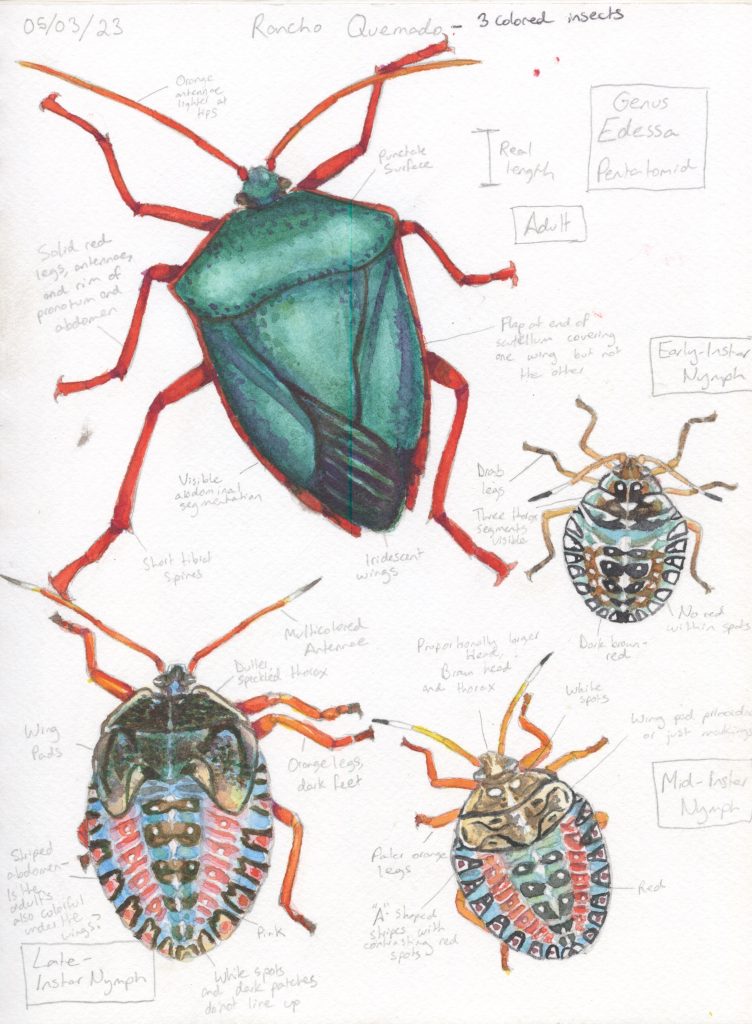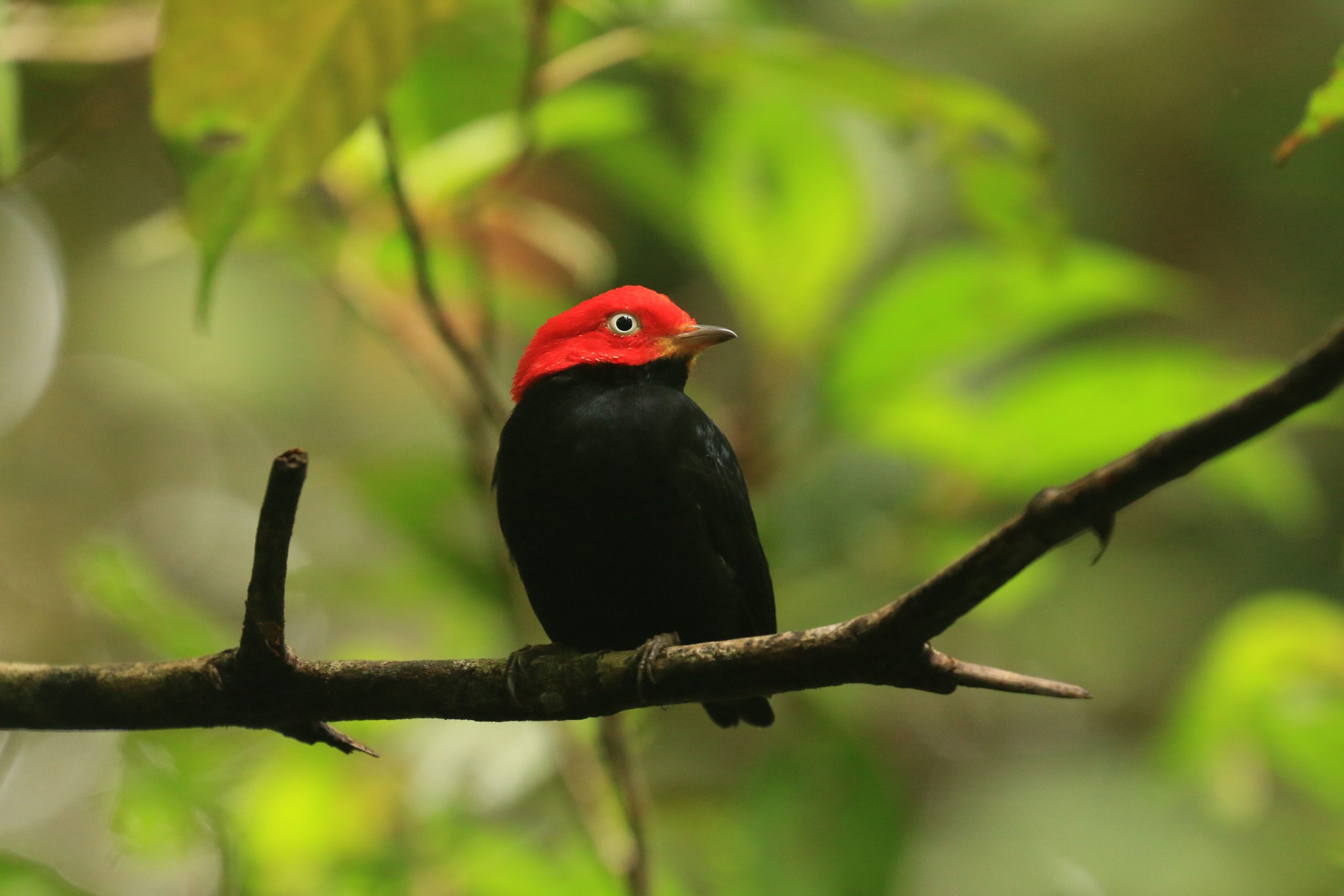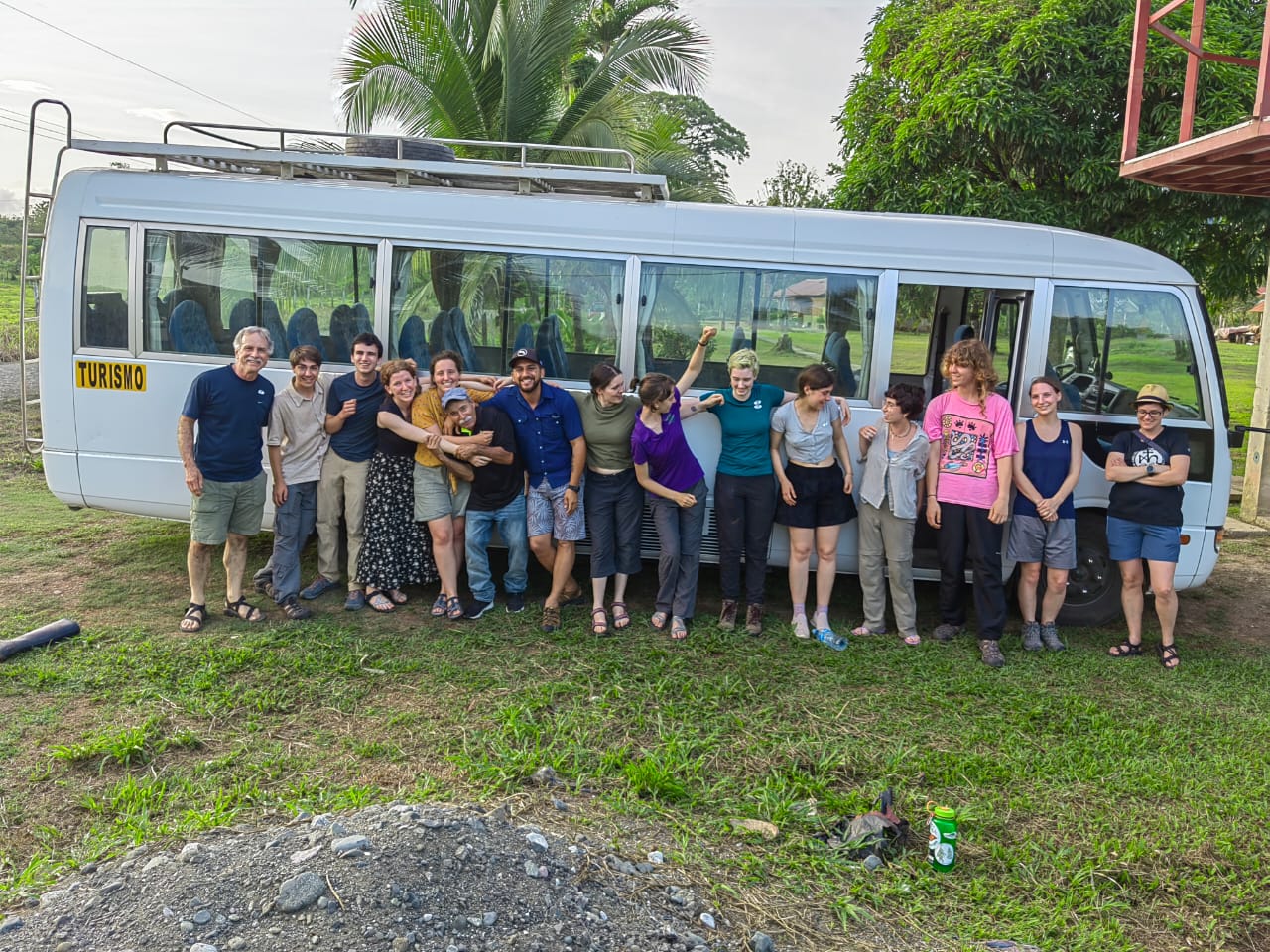
In early May of this year, we had the great fortune to bring 11 students from College of the Atlantic, located in Bar Harbor, Maine to Rancho Quemado for 4 days of living and learning in this remarkable community. Our stay was part of a six-week immersion program on neotropical ecology that took us throughout most of the country, from northeastern Caribbean slope forest to the interior of the Osa Peninsula. Carrie Graham and I knew Karen Leavelle and greatly admired the mission and on-the-ground work of Osa Birds, especially the restoration and conservation projects that have become part of daily life for the residents of Rancho Quemado. Suffice it to say, it was a no-brainer to make this community an integral part of our program’s itinerary.
Each day began with a field activity that engaged students in on-going community projects such as the routine but necessary work of weeding and transplanting native plant seedlings in the Quira Nursery (see photo below), setting out game cams along trail transects to photo document the presence of forest mammals, and a morning bird count that including sighting a Rufous-tailed jacamar (see photo below). Our time also included informal nature walks along the road or in nearby fields to observe birds, reptiles, and when it did rain, amphibians (see photo below). Interspersed with these field experiences, we also happily participated in the educationally fun (and delicious!) Lecheria tour at the home of Don Jose Trino Ureña and heard an inspiring presentation by Karen on the history and goals of Osa Birds. In the afternoon during the heat of the day, students documented their field observations and reflected upon their daily experiences in a required natural history field journal using a variety of writing and drawing techniques. The sight of scarlet macaws and toucans obviously stopped all of us in our tracks but you can see from the sampling of illustrations shown here that students were drawn to a wide array of taxa beyond the showy and charismatic species we encountered during our stay. (Insert scans here)
Early on, we sensed our students were finding their time at Rancho Quemado to be rewarding but reading their journal entries at the conclusion of our program revealed that this community made an indelible impression on everyone. We are forever grateful to the wonderful people who welcomed us into their community and allowed us to be a small part of their commendable efforts to sustain healthy ecosystems while also promoting locally-controlled eco-tourism. Yolanda Rodriguez was our point person from start to finish and how she was able to excel at simultaneously being an incredibly knowledgeable field ecologist, generous host, attentive mother, and tireless ambassador for the community was a wonder to behold. She left no stone unturned to ensure that we had a positive experience and we cannot thank her enough, especially for the ever-present hot coffee. We also learned much from the dedicated work of Nuria and Luz Ureña, whose passion for the native flora and fauna that lives amongst them is truly inspirational. Thank you both for taking the time to share your knowledge with us, including step by step directions on how to milk a cow. And then there were the delicious meals prepared for us by Alice Cambronero and her staff!
All of what we experienced could not have happened without the help of Karen. We are indebted to her for coordinating our visit to Rancho Quemado as well as finding the time to travel to Rancho Quemado several times to interact directly with our students.
